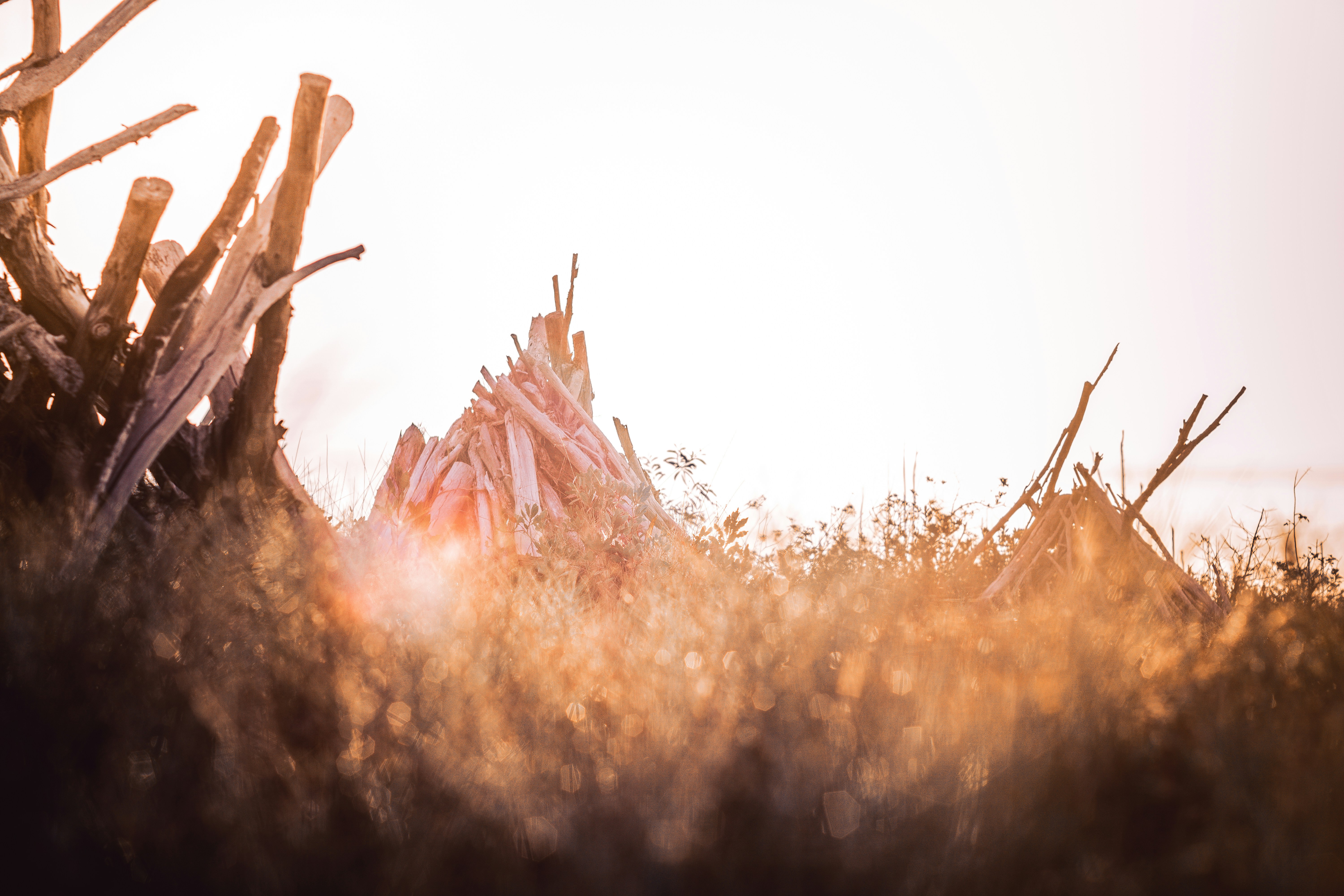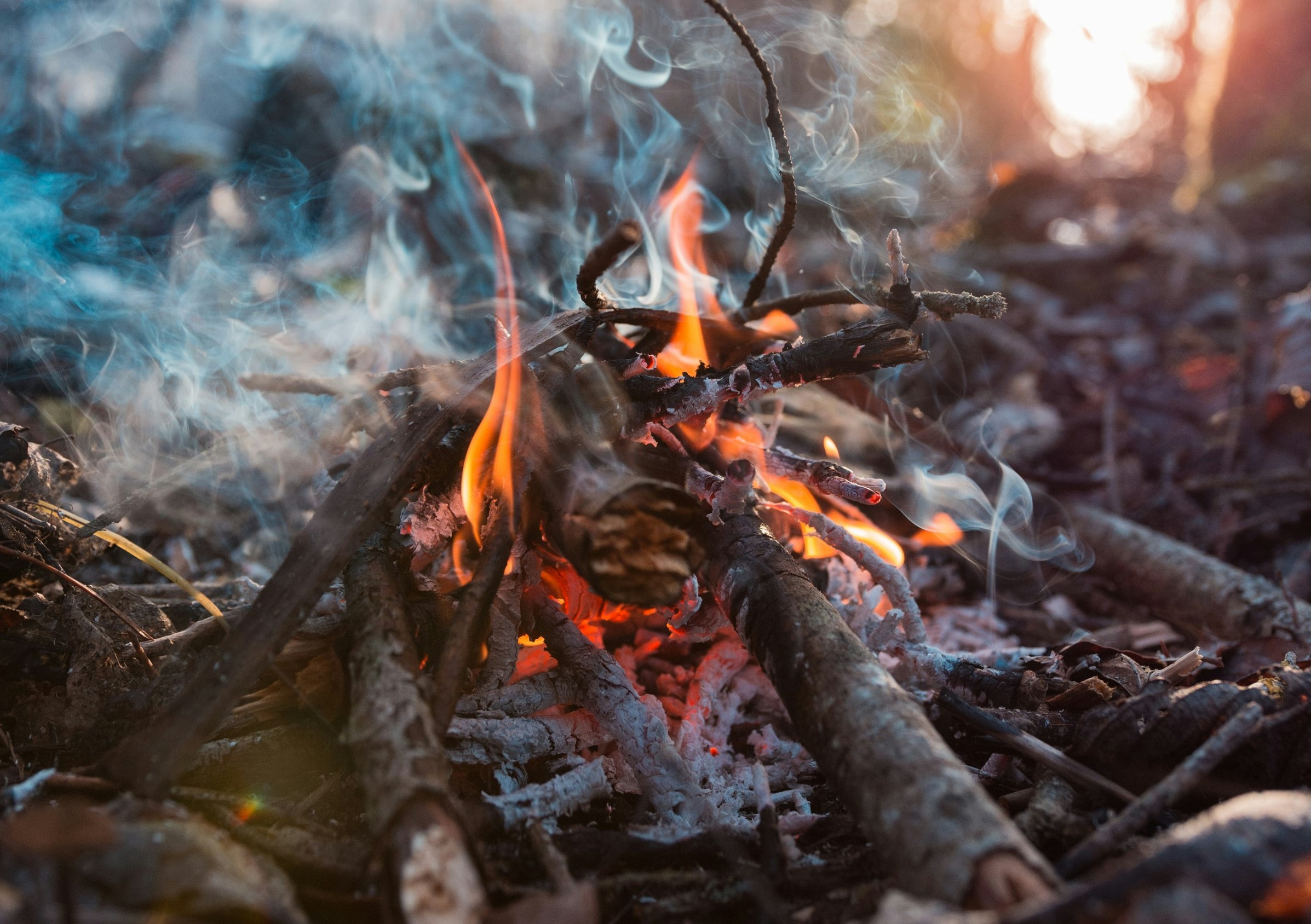Types of Fuel
In wilderness survival, wood is a versatile and readily available fuel, ideal for building a long-lasting fire when properly seasoned and dry. Charcoal, although less common in the wild, offers a hotter and longer burn, making it valuable for cooking over extended periods. If you have access to it, alcohol-based fuels like denatured alcohol or ethanol can be highly efficient for portable stoves, providing a clean and controllable heat source. Lastly, various types of fire starters, such as tinder and kindling made from natural materials like pine needles or dry grass, are crucial for igniting a fire and sustaining it until larger fuel sources catch.
- Tinder:
Small, easily ignitable material that from a spark or flame.E.g: leaves, pine needles, small wood shavings, cotton balls.
- Kindling:
Slightly bigger than tinder, kindling not only helps build the fire but also helps to sustain it.E.g: small sticks, twigs, small branches.
- Firewood:
These are larger pieces of wood that keep the fire burning longer.E.g: logs, thick branches, and chopped wood.

Fire Saftey
Fire saftey is a very serious topic. Improper fire management can cause forest fires, and wildfires. According to the National Park Service, humans are responsible for over 85% of wildfires in the United States, every year. (learn-more)
